|

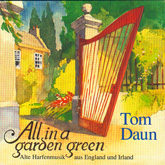
Tom Daun
ALL IN A
GARDEN GREEN
Harpmusic from
England & Ireland
Wundertüte CD
TÜT 72.167
From and with Tom Daun,
Bohemian & Celtic
Harp.
AVAILABLE HERE
• • •
The different Albums
of Tom Daun
Tom Daun
DIE BÖHMISCHE
HARFE
Tom Daun
BLUE STRINGS
Tom Daun
HARFENFLOCKEN
All Albums of
Tom Daun
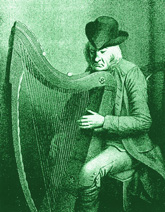 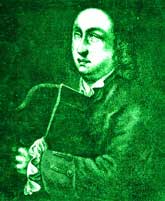 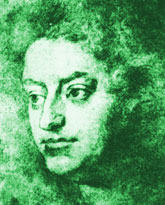 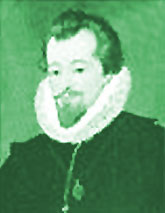 
|
Old Harpmusic from England and Ireland
Only a few melodies on this album are original compositions for the harp, namely the Irish tunes by Thomas Connellon and Turlough O’Carolan. The others are transcriptions of melodies originally written for lute of cembalo or arrangements of popular dance-tunes from the collection of John Playford.
Thus, the interpretation of the music is not 'authentic' in a strict way. The delicate sound of the harp, however, suits the music well. Both the highly ornamented lute-melodies and the modest miniatures that Henry Purcell composed for cembalo sound convincing being played on the harp. Of course, it was quite common in the 17th century to adopt melodies from one instrument to another.
The little diatonic harp was used in Renaissance and Baroque times both in England and Ireland. In The Celtic countries the 'clarsach' had been one of the most important instruments for a very long time. Most of the feudal Clan courts had their own 'clarsair' alongside the bard. But in England the harp was held in high esteem, too. In 1603 Queen Elisabeth appointed Cormac MacDermott, an Irish harper, to the 'Royal Musick' where he remained until his death in 1619.
The 17th century was the period of the final subjugation of Ireland and Scotland under the rule of the English Crown. The colonisation started by Queen Elizabeth was continued by the Stuart-Kings in a more or less diplomatic way and concluded forcefully by Oliver Cromwell. The Celtic inhabitants of Ireland and Scotland were suppressed, evicted from their homes and land, driven into exile. The inscription on an Irish gut-strung harp of the 17th century proves how bloody the conflict between Saxons and Celts really was: "Gan tead na rabair agus inne sa gall" - "May you never lack strings as long as there are Englishmen with guts".
But at the same time the 17th century saw a growth of cultural and musical interactions between Celts and Englishmen. Travelling musicians from Ireland brought their instruments and melodies to the flourishing capital of England, Scottish bagpipes were being played in the alleys of Westminster after James I had moved his court from Edinburgh to London. Many music collections published in London in the 17th century prove that Celtic fashion enjoyed great popularity in the 17th century. "New Irish Jigs" and "Scotch Tunes" appear in John Playford’s collections and even Henry Purcell arranged some of these tunes for cembalo.
In Ireland the feudal clan-system was gradually replaced by an English speaking aristocracy. The musicians, who in the past had held permanent jobs at the Celtic courts, now looked for new employers. Many of them started to perform in the mansions of the English gentry and thus got accustomed to Continental music taste. Turlough O’Carolan, for example, met Francesco Geminiani, who at that time worked as an opera director in Dublin. In his compositions O’Carolan combined elements of Celtic music tradition with the ornamentation and figuration of Baroque music.
The Album-Tracks
English Lute Music of the Renaissance
Sir John Smith His Almaine (track 1) and Melancholy Galliard (track 2) are two examples of the art of John Dowland (1563 - 1626). The next melody Willson’s Wide (track 3) was taken from an anonymous manuscript collection. 'Jane Pickering’s Lute Book' contains the two tunes What If A Day and A Toy (track 4). In the same collection there are some remarks concerning lute tunings popular at that time. One of these tunings is called "The Harp Way" - a proof of the popularity of harp music in England around 1600. The unpretentious Alman (track 5) is a composition by John Dowland.
Melodies from the collection of John Playford (1651)
In 1651 the London publisher John Playford edited "The English Dancing Master" in which he not only gave detailed descriptions of popular dances but also printed the melodies of many country-dances In the following 80 years there were 18 editions of the "Dancing Master" - always taking into account the latest music fashion and new 'hits'. The 535 melodies published between 1651 and 1728 form a real dictionary of English popular music over three generations.
Daphne (track 6) appeared as "The shepherdess" in later editions of Playford’s collection. Goddesses (track 6) is one of the few melodies that was published in all 18 editions of the "Dancing Master" - an evergreen, popular for eighty years or more. All In A Garden Green (track 7) is a slightly older tune. The title was already used in the Fitzwilliam Virginal Book around 1600. Millison’s Jig (track 7) has a distinctly Celtic character and could also be played on a bagpipe. Jenny Pluck Pears (track 8) was printed in different versions in the "Dancing Master" - first in minor, later in major keys. The interpretation in this recording follows the version of the first edition.
Irish Harp Music of the 17th century
Apart from the ballad melody Gilderoy all these tunes were taken from Edward Bunting’s collections. Bunting was an organist from Belfast who had been commissioned to note down the music of the last Irish harpers at their meeting in 1792. He became an enthusiastic collector of harp music and spent a lot of time in the remote hills of Donegal and Tyrone, meeting the last representatives of a dying tradition. Thus Bunting wrote down the last remnants of what had in former times been a flourishing tradition.
Abigal Judge (Track 9) is a composition by Turlough O’Carolan (1670 - 1738). The following piece The Calvacade Of The Boyne (Track 9) probably dates back to the Battle of Boyne in 1690. Kathie Tyrell (Track 10) is cited by Bunting as a perfect example of the old Irish harp style. The march Lady Iveagh (Track 10) was composed by Thomas Connellon, an Irish itinerant harper born around 1640 in Sligo. The composer of Gilderoy (track 11) has been left anonymous. O’Carolan is the author of the remaining three melodies. Carolan’s receipt (track 12) was noted by Bunting from the playing of the harper D. Black in 1796. The Princess Royal and Fanny Power (track 13) were composed by O’Carolan for two aristocratic ladies.
Compositions by Henry Purcell (1659 - 1695)
The six little pieces which are combined into a suite were taken from different "Lessions for the Virginal, Harpsichord and Spinet" published between 1689 and 1696.
The opening Prelude (track 14), played in an improvised style, is followed by a Hornpipe (track 15). This dance was one of the most popular English folk dances of the 17th century - a solo step-dance, that could be performed in a very limited space and was therefore well-liked by sailors. Saefuchi’s Farewell (track 16) was dedicated to the soprano singer Giovanni Francesco Grossi, employed in the Royal Musick of King James II. When he left England Henry Purcell composed this beautiful Air for him. A New Scotch Tune (track 17) is one of the many melodies brought to London by wandering musicians. Also Rigadonn (track 18) has its roots deep in folkmusic of those times. Very popular in England of the 17th century and originally coming from the South of France. The final Jigg (track 19) is related to traditional Irish Jigs - similar tunes can be found in the collections of John Playford.
All tracks of the Album recorded at Protestant Church of Köln-Rondorf in April 1994. Engineer: Götz Bürki. Mastering: Günther Pauler.
(Tom Daun)
|